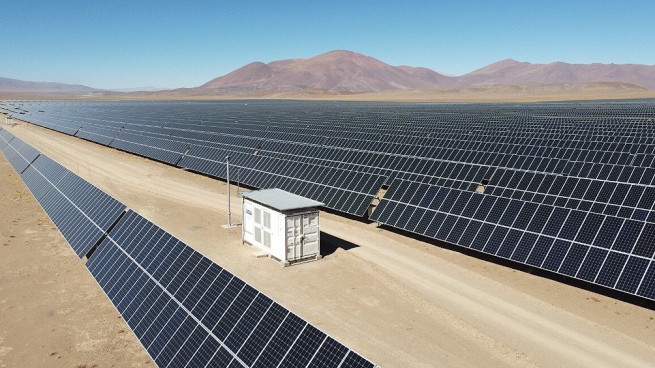Government seeks to promote the development of Regional Electricity Markets for expand the available power via renewable energy generation projects in each of the provinces, taking advantage of the available distribution networks and diversifying the energy matrix.
In this framework already opportunities were identified for almost 1Gw of generationwhich will improve the provision, price and reliability of the service.
The initiative is part of a set of measures that includes the current call until June 30 next to Manifestations of Interest (MDI)to develop small-scale infrastructure projects that contribute to incorporating renewable generation, or storage facilities in the network.
As part of the same strategy, progress will also be made in the authorization of distributor contracts for its large users and, thirdly, the possibility of specifying renewable projects with provincial generating companies.
The Secretary of Energy, through the Undersecretary of Electric Power, anticipated the formation of the Regional Electricity Markets with the objectives of promoting actions to diversify the energy matrix in order to make viable the development of different sustainable technologies with one with an integration perspective. productive and federal scope.
At the same time, it seeks to achieve a geographical dispersion of the undertakings and take advantage of the country’s potential in this matter, and at the same time promote the incorporation of renewable generation to reach the goal of 20% participation in consumption in 2025.

To this end, regulations are expected to be issued for local projects that improve the provision of electricity in terms of price and reliability of supply and that promote a provincial and regional productive articulation.
The premise of the initiative is to promote renewable generation that is consumed in the same area that is generated, for which it seeks to promote the development of small-scale projects of a local nature, taking advantage of the transport capacity that reduces or eliminates supply restrictions, and the need for forced generation with gasoil is reduced.
for the call to Expression of Interest (MDI) to incorporate Renewable Generation, the aim is to guide potential bidders in the development of projects, to map the potentialities throughout the country, for which 64 projects were identified for a total of 986 MW of generation.
As for the contracts of distributors with large users, It was highlighted that these have the obligation to meet the goals of electricity consumption with renewable energy.
While the Renewable Contracts Market (Mater) only provides contracts for Large Users of the EM Wholesale Electricity Market with renewable generators.
There are some 3,438 users who are part of the Large Distributor Demands (GUDIs) category, whose annual demand is 13,016 GWh/year that they do not contract because to do so they must go outside the scope of the distributors distributed in all the provinces.
A) Yes, the official idea is to authorize that each distributor can group this group and make a contract to meet the goal of coverage of electricity consumption with renewable energy.
In this way, the mechanism would be expanded so that distributors can contract renewable generation to assign it to their GUDI demand that have an interest and whose purchase price is similar to or less than that of a WEM Large User.
With this policy, demand is expanded with free agreement contracts between the parties, terms and prices so that users can access renewable energy through distributors, which today can only be done through joint purchases with Cammesa.
The third project provides for the development of renewable projects with provincial generating companieswhich provides for direct contracting to national or provincial state companies or to set up a regime aimed at a limited number of projects not exempt from transportation limitations.

This initiative is anticipated to have a significant impact on local development, and the values that it will allow to offer will be established based on the prices resulting from the competitive procedures previously convened by the Enforcement Authority.
The characteristics and potential for substitution with renewable generation contemplates the technologies of Biomass (BM), Biogas (BG), Solid Urban Waste (RSU) and Small Hydraulic Developments (PAH)m considered suitable for injecting power both during the day and at night.
Solar Photovoltaic (SFV) technology would be effective to contribute during the day peak, and not so during the night peak, for which it must have the capacity to control voltage in order to be able to inject the necessary reactive power.
Meanwhile, Wind Power (EOL) technology would be effective in providing energy intermittently, being less effective in replacing forced generation, while the incorporation of batteries of appropriate scale and capacity would be a complement to give firmness to the projects.
In all cases the location, power, resource, firmness and installation cost will be the main elements of evaluation.
Without limiting the evaluation of projects, it could be indicated that the NEA, Litoral and Buenos Aires areas could be the regions with the incorporation of competitive projects in Biogas and Biomass.
For its part, the Solar PV technology, with different yields, could be installed in different regions, being the NOA an area with potential; while the Small Hydraulic Developments (PAH) in regions such as Cuyo, Comahue, NOA and Centro, could have a high potential for projects of this type of technology.














